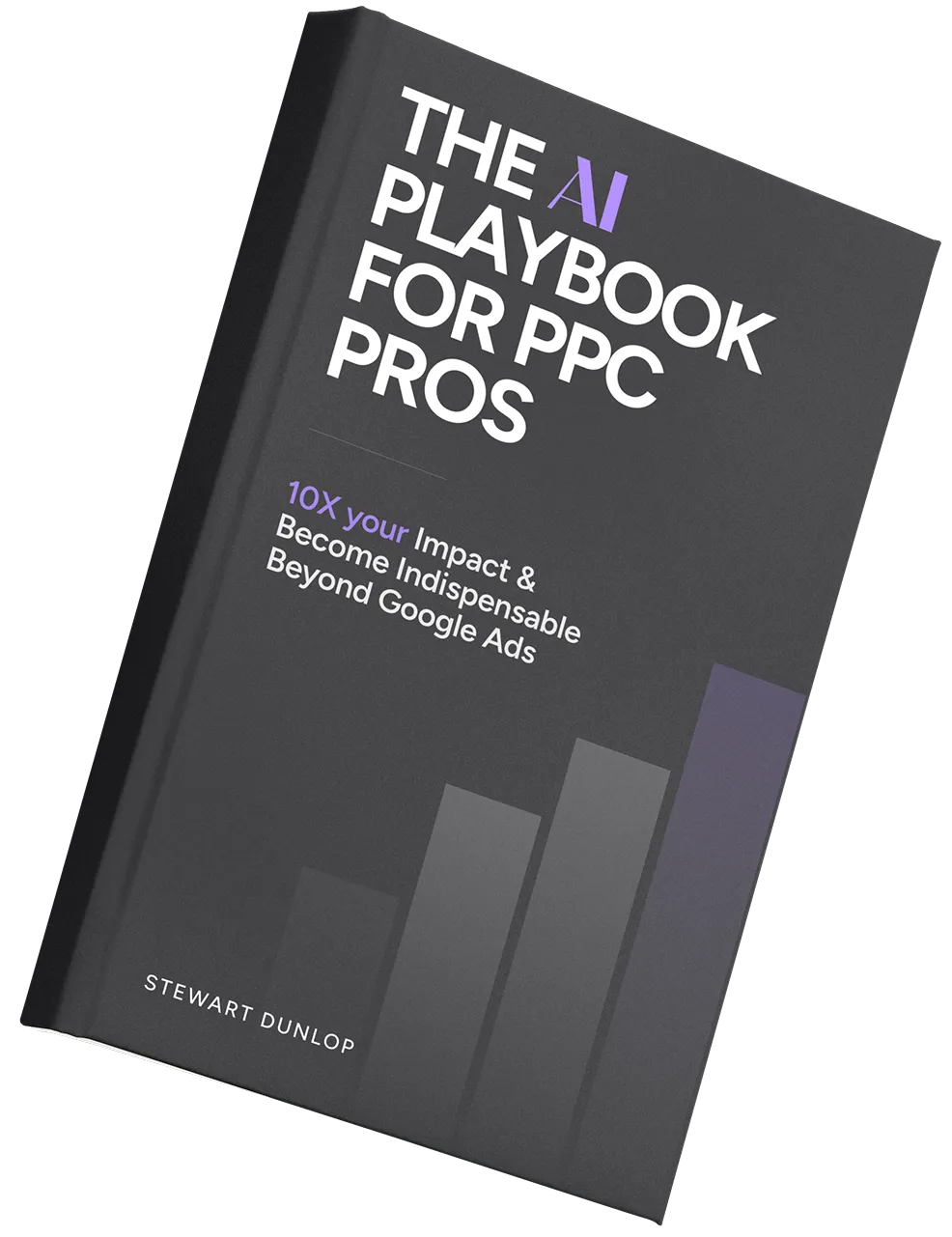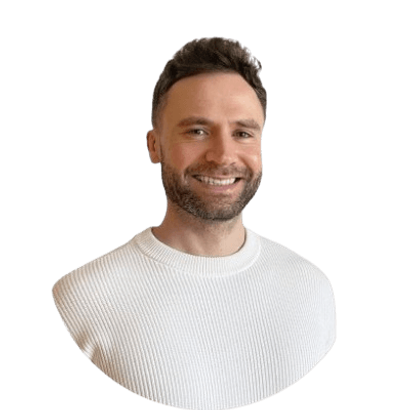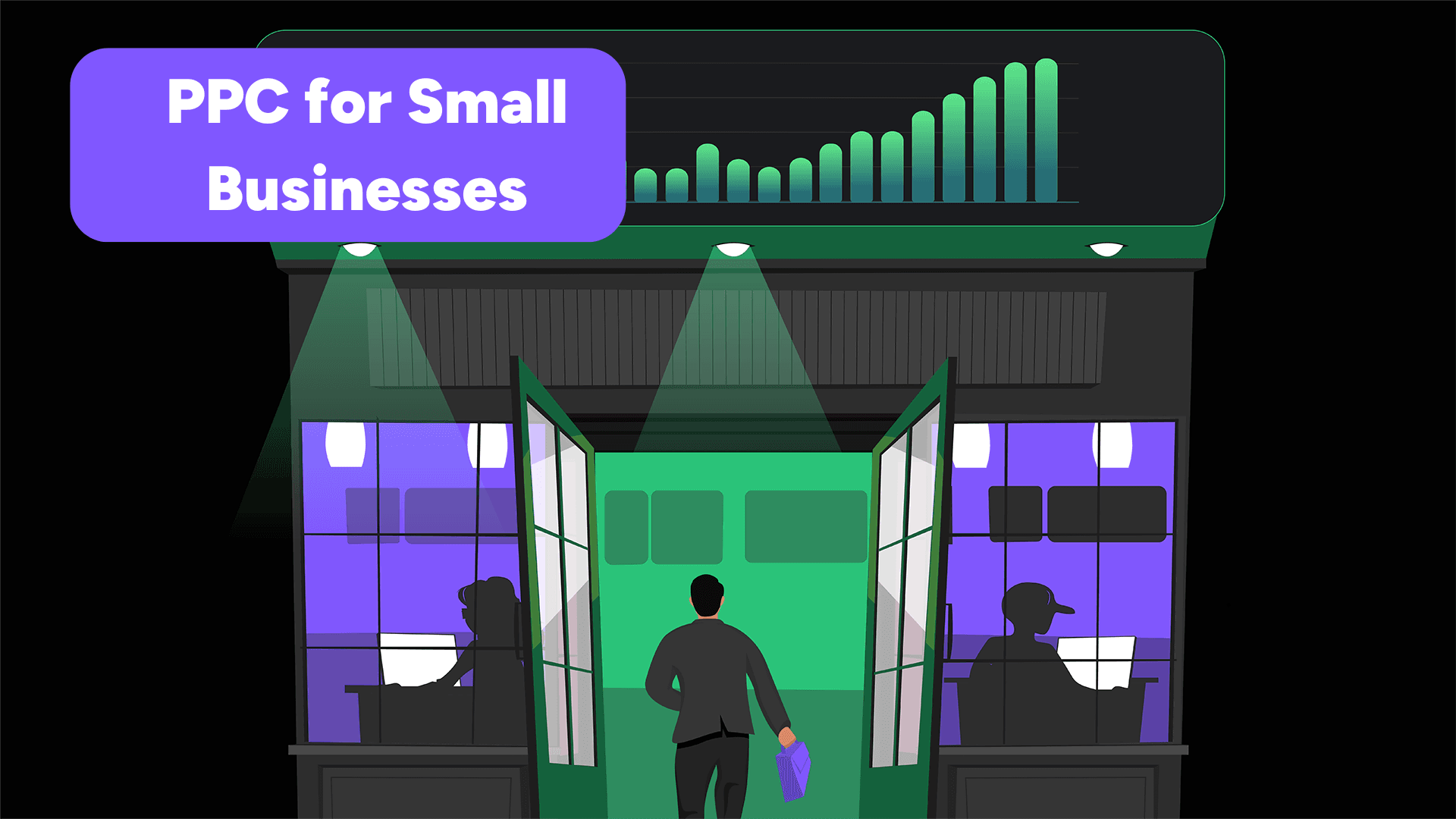
PPC is hands down the most effective advertising channel for small businesses to attract new customers.
That's our opinion of course, but hear us out..
In 2022 alone, the United States witnessed a surge of over 5 million business applications, which is nearly double the annual applications that were received a decade ago.
Competition is tough.
According to Backlinko, the first result on Google is ten times more likely to be clicked on than the tenth result.
One way to beat these odds is through pay-per-click (PPC) advertising, a specific type of search engine marketing.
This ensures that when potential customers search for something online, your business appears at the top of their search engine results.
PPC ads are an effective advertising method for small business owners to attract new customers fast.
💥 Cost-effective: You can earn $10 for every $1 invested, which is a 1,000% ROI.
💥 Immediate impact: No need to wait until your ads kick in; they take effect right away.
💥 Target niche demographics: Easily connect with your specific customers.
In this article, we delve into the nitty gritty of PPC advertising for small business owners.
What Is Pay-Per-Click Advertising?
If you invest in a $1,500 billboard for a month, your small business might gain some visibility.
However, unlike pay per click advertising (PPC), the cost remains fixed, irrespective of how many people engage with it.
With PPC paid ads, you're only billed when potential customers click on your ad.
This means that you pay for actual engagement rather than just exposure.
Imagine you own Velocity Motors, an auto repair shop 🚗
- You decide to launch a PPC campaign with Google Ads.
- Your potential customers search for an "auto repair shop" on Google.
- They discover your company "Velocity Motors" at the top of their Google results.
Great, now we're getting somewhere.
- Each time someone clicks on your ad, it costs you $2. If 10 people click, that's $20.
- However, a single visit to your shop amounts to an average profit of $200.
👉 If you get 1 visit for every 10 clicks, that is a return on investment (ROI) of 10X!
Not to mention the return business you'll get from that customer in the future.
Let’s consider a real-life example. If you search for “Auto Repair Shop Utah,” you might see the following results:
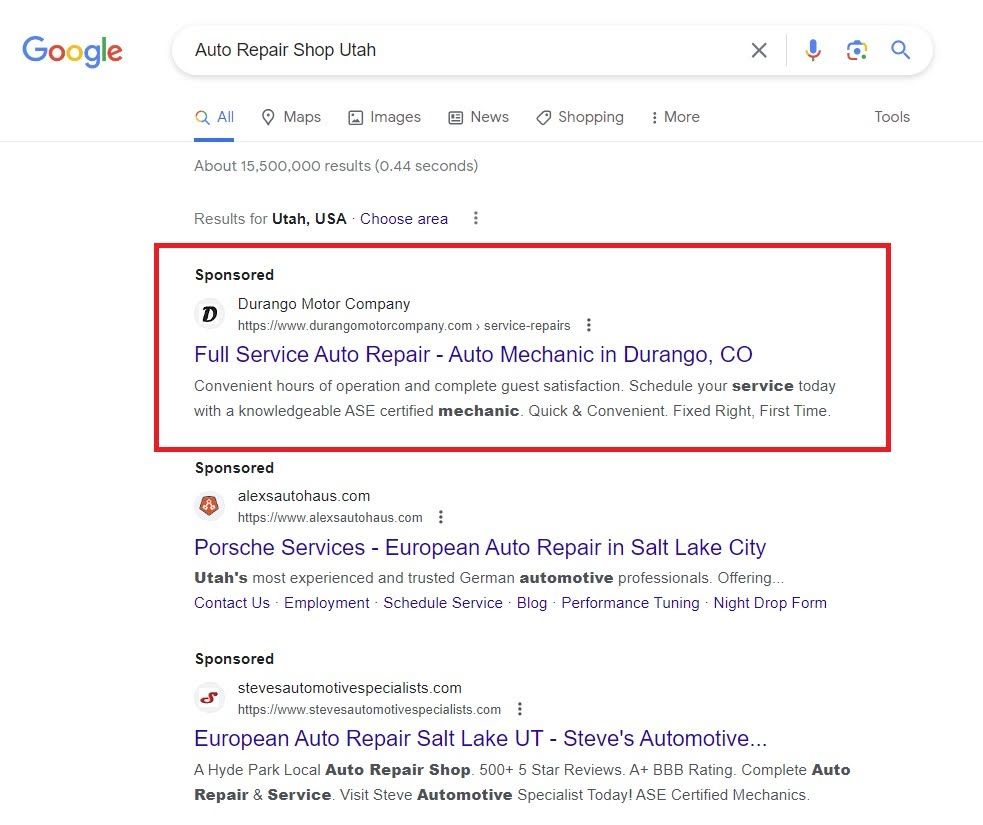
The top three entries are Automotive PPC ads, and “Durango Motor Company” has managed to secure the top spot. If you click on their ad, you will be sent to this landing page on their website:
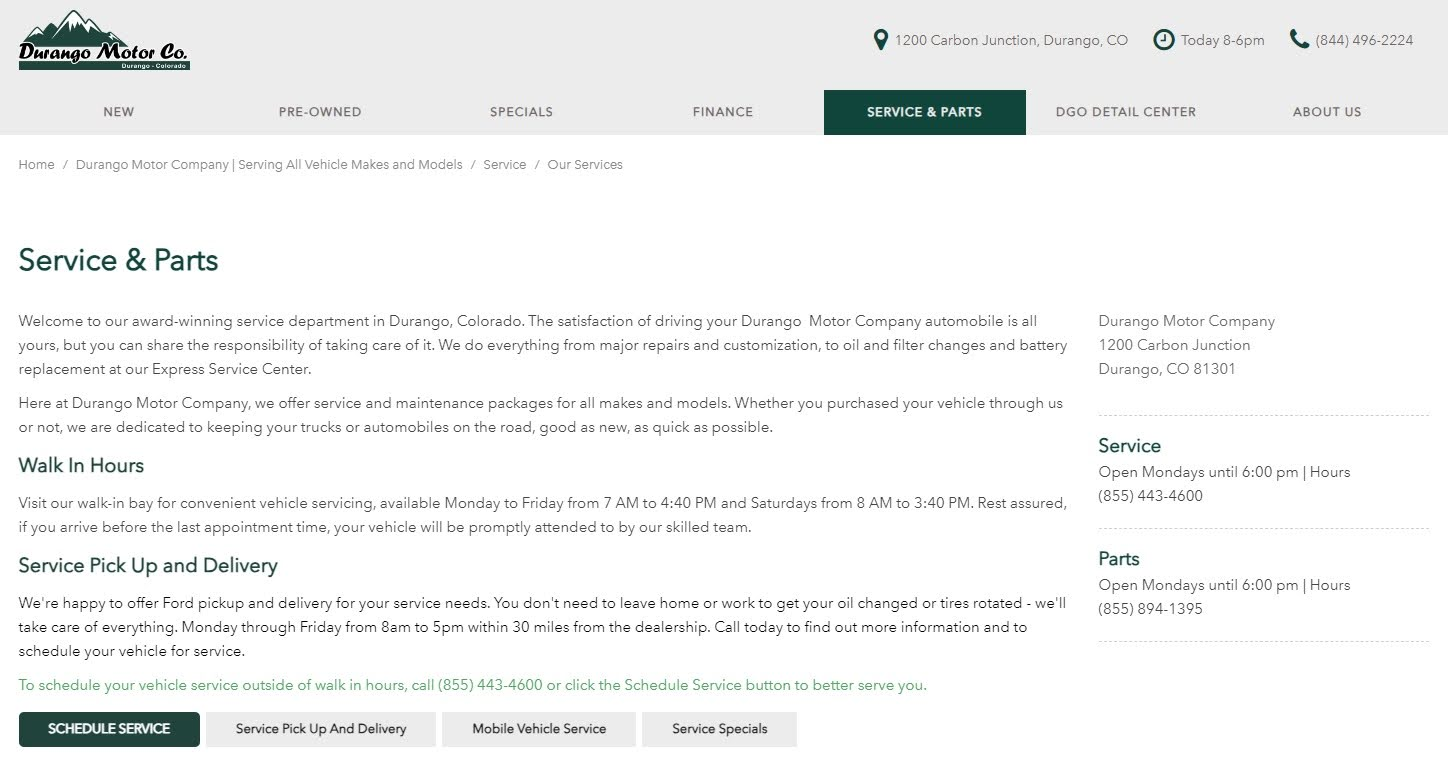
Here, customers can easily find out when their auto shop is open for services or parts, and there are several calls to action (CTAs), such as “Schedule Service.”
The Benefits of PPC Ads
You can see why small business owners might want to use PPC ads:
💡 Immediate visibility: Their ad shows up first, which increases their click-through rate (CTR).
💡 Targeted advertising: They get the attention of people who are looking for auto repairs in Utah.
💡 Measurable results: They will be able to follow how many people click on their ad.
PPC campaigns, unlike fixed-cost billboards, provide real-time, targeted visibility, turning clicks into new customers for small businesses.
PPC is also quite different to SEO, where you invest in content over time for a long-term pay off.
How Do PPC Ads Get Selected?
When you set up a PPC campaign, you don’t automatically hit the top of your preferred Google search.
Instead, you join a bidding war with other small businesses, where the winner’s ad gets displayed to the next user.
This doesn’t mean you have to manually outbid your competitors, like traders shouting on the floor of the New York Stock Exchange.
Instead, this is an automated, online process that’s handled by your chosen advertising network, such as Google Ads or Facebook Ads.
When you set up your campaign, you supply the following information that’s then carefully considered against your competitors:
✅ The amount you’re bidding
The bid amount you set has a big impact on your campaign.
This is because your advertising network receives several offers for each advertising spot, and they use the bid amounts to choose the winner.
For instance, if you bid $2 for the top PPC spot, but your competitor offers $2.50, they’re more likely to win the prime real estate.
When setting your bid amount, otherwise known as your cost-per-click (CPC), consider the competitiveness of your:
📌 Market: If you're advertising cleaning services in a busy place like Los Angeles, where many other businesses are doing the same, you might need to bid more to win the top spot.
📌 Industry: The industry you’re in makes a difference. For example, real estate businesses might be charged less ($1.55 per click), but legal services could be pricier ($9.21 per click).
Have a look at the graph below that outlines the average costs and success rates of PPC online advertising on Google Ads and Microsoft Ads for various industries:
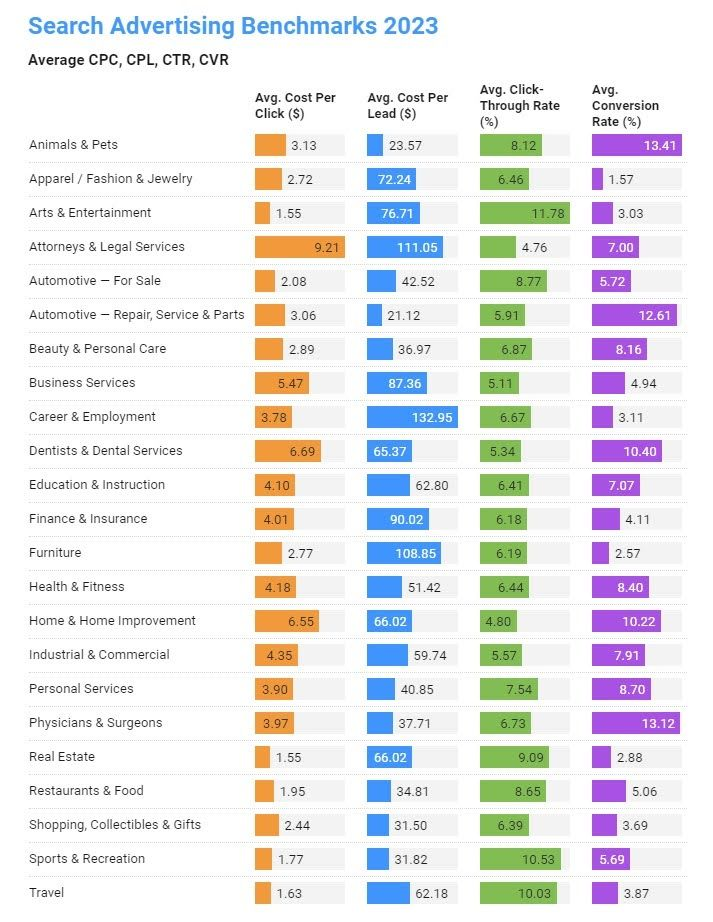
Here, you can compare the average CPC with the following metrics:
- Click-through rate (CTR): This measures ad engagement. In other words, the percentage of people clicking on an ad compared to those who see it.
- Conversion rate: This looks at campaign effectiveness, which is the percentage of website visitors completing a desired action, such as making a purchase.
- Cost-per-lead (CPL): This outlines lead generation efficiency. It’s the number of average leads divided by the average advertising spend.
✅ The quality of your advert
In addition to bid amounts, you need to make sure you submit a high-quality ad.
Advertising networks, such as Google, want to make sure users enjoy their time online. If your ad doesn’t contribute to this, it won’t win its auction.
Your ad’s quality is measured according to each platform’s preferences. The following factors are often considered:
📌 Historical click-through rate (CTR): If your adverts were well-received in the past, then ad networks assume they will perform well today, too.
📌 Ad relevance: If your keywords match what users are searching for, your ads will be more likely to be prioritized by your chosen ad network.
📌 Landing page experience: A good ad should lead to a high-quality landing page. You'll get marked down if your landing page sucks.
Once you’ve started your campaign, your chosen platform will assess your adverts and they will automatically join an auction for ad space in their network.
For example, Google Ads calculates an Ad Rank for each client. This is determined by multiplying their bid amount with their quality score.
Imagine you run a pet grooming salon and decide to use Google Ads.
When you submit your ad, they will look at how much you're willing to spend (your bid) and how decent your ad’s quality is (quality score). These factors are then considered to give you your Ad Rank.
Next, they check what other grooming salons are doing, and the one with the highest Ad Rank will get the top spot in Google’s search results.
Here’s an example of a successful bid for a “pet grooming salon” in America:

Choosing the Right Ads Platform for Your Small Business
There are several advertising networks you can choose from.
We have found that small businesses can benefit most from one of three advertising networks:
- Google Ads
- Facebook Ads
- Amazon Ads (Ecommerce)
Each of these gives your business access to large audiences and their success rates are tried and true.
Choosing the right advertising network depends on the nature of your business, and where your potential customers are active.
Let's delve deeper into which networks could be a real game-changer for your business:
📌 Google Ads
Google Ads (previously Google Adwords) is the most well-known PPC ads network, because you can target people depending on the search terms they enter.
With more than 8.6 billion searches made on Google every day, you’re likely to find potential clients among them.
Here are some examples of businesses that get a good ROI with Google Ads:
🚢 Travel and hospitality: If you operate in the travel industry, you can capitalize on users researching travel destinations. This could lead to them discovering your underground walking tours in Seattle or your Art Deco Inn, regardless of whether they’re living in California or New York.
🛠️ Hands-on services: If your business operates locally, use PPC to be the top choice for services. For example, if you run a small plumbing business, make sure clients find you when they Google “plumber near me.” We already run PPC campaigns for a number of plumbing businesses.
💼 Professional services: Connect with local clients who seek face-to-face services like IT or consulting through targeted Google Ads, which ensures your specialized offerings stand out in the market.
🛒 Independent e-commerce stores: You can use Google Shopping (or have us do it for you) to spotlight your e-commerce store, which will demonstrate your competitive prices and attract potential customers searching for specific products.
🏡 Home improvement services: The bulk of home improvement projects rely on local businesses. If you run a landscaping business from Nevada, it would be great to win the top spot ahead of a YouTube video about gardening in the Arizona desert.
Additionally, all of these small businesses can benefit from local service ads, which is a type of Google ad reserved only for small local businesses.
Overall, if your clients are likely to search for your services online, then you will benefit from Google Ads.
The above list outlines this well, but it doesn’t mean that a small business outside of these parameters won’t benefit from this ad network as well.
📌 Facebook Ads
People often use social media to unwind and pass the time.
When you casually browse Facebook, you may see lighter and more lifestyle-oriented products and services.
If your business falls under any of these categories, then Facebook Ads may be a good fit:
🍦 Food and beverages: Facebook is a great place to entice users with your ice cream parlor’s latest creations or showcase your bistro’s new winter menu. They can easily share this and, within the hour, you might have new customers showing up.
👗 Retail and fashion: Facebook ads target users by looking at their hobbies, page likes, and shopping behavior. This means that you will be able to showcase your latest retail items to those who are more likely to engage with your brand.
💪 Health and wellness: This is particularly effective if you’re offering a special deal for new joiners. For instance, if you have a small Pilates studio, you could run a Facebook ad that encourages men to join during November at half the usual price.
📆 Event promotion: Facebook enables precise targeting for events. Perhaps you’re setting up a pottery workshop in Phoenix to promote your business. This may be well received by art students–and Facebook Ads can target this exact market.
In a nutshell, if your business can inspire potential clients with beautiful pictures and videos during their downtime, then Facebook Ads may work wonders for your business.
If you’re interested to learn more about this, consider these Facebook PPC strategies for your business.
📌 Amazon Ads
Amazon has a demand-side platform (DSP) that allows you to manage your PPC ads, including video ads, display ads, and sponsored products and brands.
If you’re already selling your products on Amazon, then PPC ads can help you promote your products by creating sponsored products and brands.
This will push your business to the top of Amazon’s search results, give you extra visibility, and connect you with new clients.
Have a look at the following examples of how you could do this:
🚀 Product launches: A great way to promote a new skincare range for sunkissed 40-year-olds is to use PPC adverts in the “Sports and Outdoors” section of Amazon. This might attract sports enthusiasts who spend a lot of time in the sun.
📚 Books and media: Users often search for books directly on Amazon. Authors, publishers, and media creators are aware of this, which makes Amazon PPC ads a valuable avenue to connect with new readers.
🔌 Consumer electronics: It’s much easier to review gadgets online than in-store. If you’re selling home security cameras, you could use a 30-second video ad to show Amazon users how your product can keep their loved ones safe.
At PPC.io, we specialize in all three of these advertising networks.
We do a deep dive into your small business, determine which adverts would yield the best results, and then set up and run your PPC campaigns while you focus on running your business.
If you’re ready to kickstart your PPC digital marketing services—or take them to the next level—reach out to us for a private consultation.
How to Set Up Your First PPC Campaign
Now that you have a good understanding of what PPC advertising is, how it works, and where you can execute it, let’s have a look at how you can launch your first PPC marketing campaigns.
To help illustrate this process, let’s follow Lakeside Bakery, a fictional business that’s based in St. Cloud, Minnesota, as it embarks on its first PPC campaign.
1️⃣ Define campaign goals
Start by clearly defining your goals. Do you want to increase your sales or create more brand awareness?
Specify the number of new clients you hope to acquire through your PPC campaign and paint a vivid picture of what success looks like to you.
Lakeside Bakery is a family business that’s been a staple in St. Cloud for 20 years. Up to now, it’s relied on good SEO on its website to bring in new clients.
However, they have noticed a slowdown in new customers and they’d like to expand their marketing efforts.
After they’ve decided to use PPC advertising, they set the following goal:
🎯 Increase local visibility: Lakeside Bakery aims to increase foot traffic to its physical location and increase online orders. They believe that achieving a 5% click-through rate (CTR) on their PPC campaign will help make this a reality.
This goal is specific and can be easily measured against the results. Once the campaign has ended, this is the benchmark against which it will be evaluated.
2️⃣ Choose the right platform
The platform you choose will depend on the kind of business you’re running. If you’re working with a lifestyle brand, then Facebook Ads is a good fit.
For example, have a look at how MAC Cosmetics uses Facebook PPC adverts:
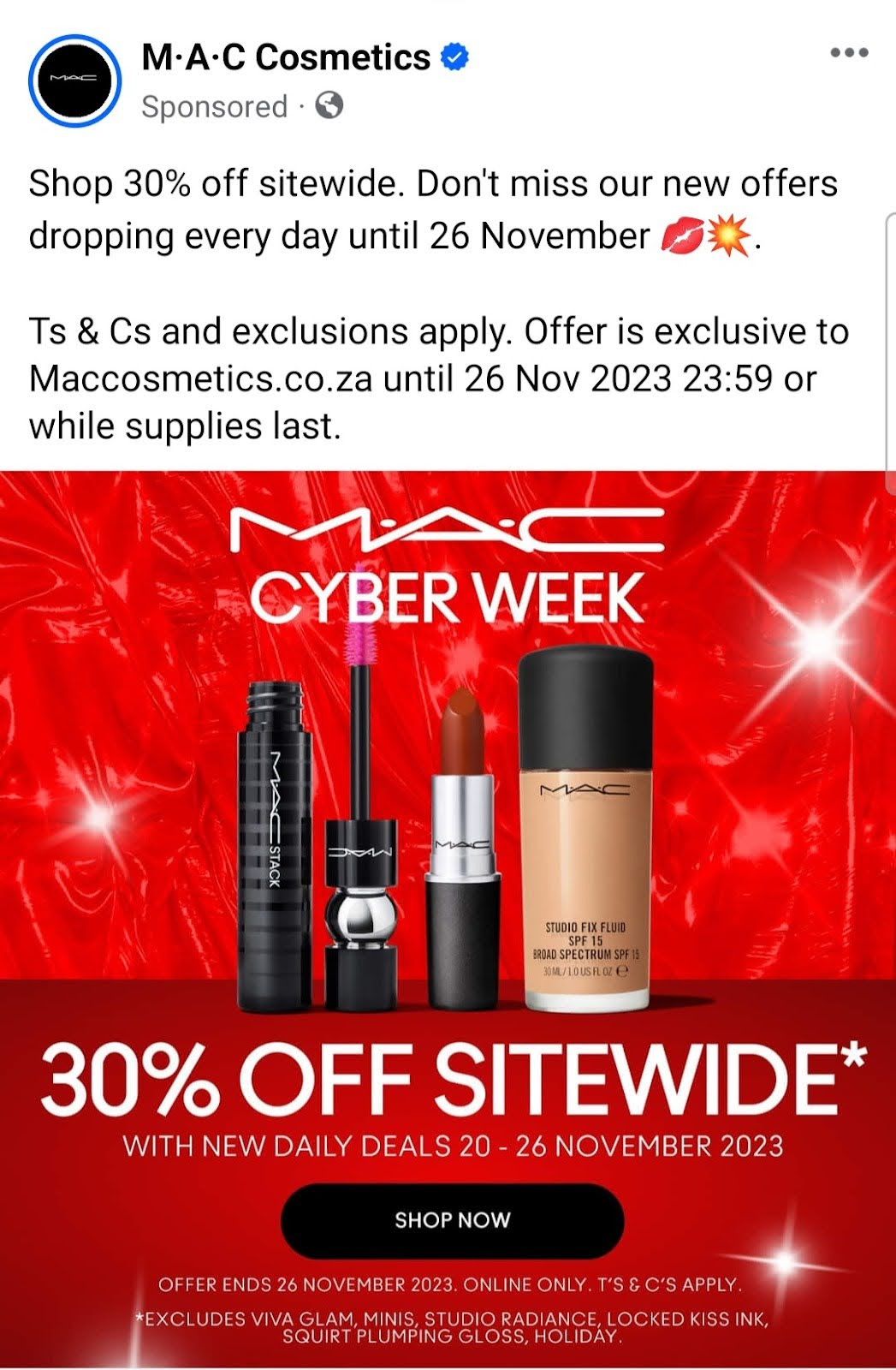
On the other hand, if you’re selling products online, then Amazon Ads may be a better fit.
On Amazon, you can connect with buyers who are already on the lookout for products. Here’s an example of a sunscreen brand that’s being promoted:
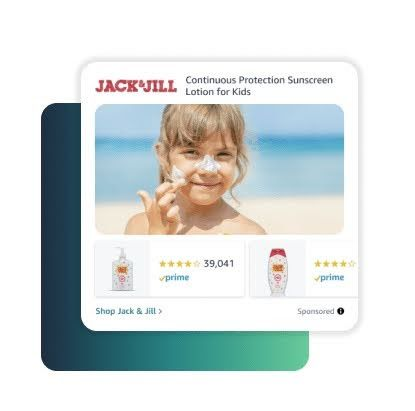
Since Lakeside Bakery wants to target its local community, it would benefit from Google Ads.
If either a local or an out-of-town visitor searches for a bakery in St. Cloud, the business can ensure that it will appear at the top of the latest search results.
This is an example of what they will have to compete with should someone search for “bakery St. Cloud”:

3️⃣ Set a budget
When working out your PPC budget, consider the competitiveness of keywords in the local market, desired ad placements, and the expected CPC.
Your budget should also include the cost of creating appropriate designs, preparing a landing page, and setting up the adverts.
You can either do this work internally and bill yourself, or outsource the work you don’t feel comfortable doing yourself.
For Lakeside Bakery to achieve its goal, it decided to allocate $1,500 over the next 3 months to its PPC campaigns.
The amount you choose for your own business may vary significantly, depending on your industry and goals.
4️⃣ Do keyword research
With the right keywords, your small business will reach the right audience, which will lead to increased click-throughs and, ultimately, more conversions.
Here’s an example of a New York-based bakery that capitalizes on the keywords “bakery near me”:

Since Lakeside Bakery is using Google Ads, they will use Google's Keyword Planner for their keyword research.
They will start by determining seed keywords, which are broad keywords that describe their bakery, such as:
🔎 Bakery St. Cloud
🔎 Local pastries St. Cloud
🔎 Artisan bread St. Cloud
🔎 Custom cakes St. Cloud
🔎 Freshly baked goods St. Cloud
Once they have this ready, they will evaluate each term’s search volume and competition, and organize their preferred keywords into groups.
You can also compare search volume on Google’s Keyword Planner. Here’s an example of the search volume for “blueberry muffin.”
You can see how it changed from month to month and even compare the total searches with mobile searches.
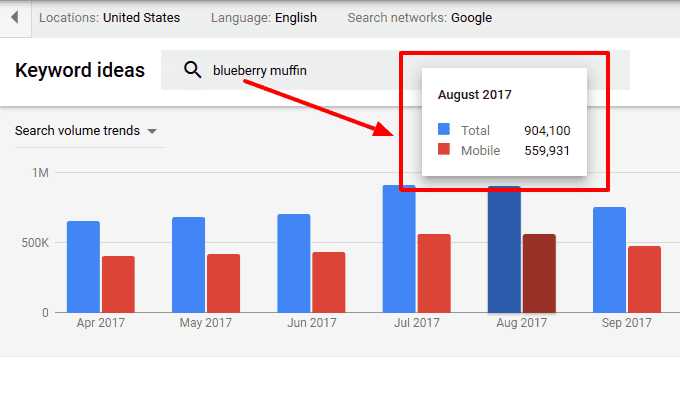
5️⃣ Design ads
When you design your PPC adverts, there are two important rules you should follow:
✅ Include a clear call to action (CTA)
Make sure users know what to do if they’re interested.
Include visual cues to direct them toward clicking on your ad, such as text that says “Find out more” or a bright background behind your CTA.
Here’s an example of some great CTAs when searching for “math tutor Phoenix”:
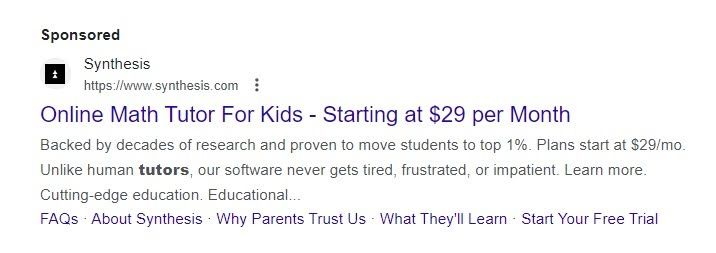
This PPC advert from Synthesis offers five different links. If you want a math tutor for your child, you may be drawn to the link: “Why Parents Trust Us.” If, on the other hand, you’re hoping to save money, you might opt for the CTA: “Start Your Free Trial.”
✅ Highlight your unique selling proposition
Your ad may appear among other adverts, which means that you need to make sure your business stands out. Clearly explain to users why you’re their best choice.
Lakeside Bakery is the oldest bakery in St. Cloud, with family recipes that date back generations. This is their unique selling point, so their ad may include this text:
“Experience the Tradition of Lakeside Bakery – Where Artisan Baking Meets Family Warmth. Order Now for Freshly Baked Goods”
6️⃣ Design landing pages
Your landing page will impact the quality of your ad, which will influence its bidding performance.
Hallmarks of a good landing page
- Engaging content & headlines: Make sure you use relevant headlines that describe the service without any fluff, and address pain points for customers.
- Appropriate images: If you’re selling hardware, don’t use an image of children climbing a mountain to sell your products. The images you use should directly relate to your business.
- Call to actions: Make it easy for the user to fill out a form or phone your number.
- Social proof: Add reviews! People love seeing social proof and testimonials.
Lakeside Bakery already has a website set up for its customers.
For this PPC campaign, they decided to send users to their bakery menu, where they will be able to browse their latest lineup of baked goods and easily place orders.
7️⃣ Set up and launch campaign
Now that you have everything you need, you can log in or sign up to the ad network you decided to use and start setting up your campaign.
Among other things, you will have to decide on the following:
📊 Ad targeting: Choose the ideal demographic you would like to advertise to. Make sure your ad will only be displayed to users who find it relevant.
📊 Bidding tracking: Set bid amounts that can successfully compete for ad placements. Refer back to your budget to make sure your campaign aligns with your goals, and research the CPC that’s appropriate in your industry.
Use the average CPC as a guide when you set your bidding amount.
Here’s an outline of some general industry averages:
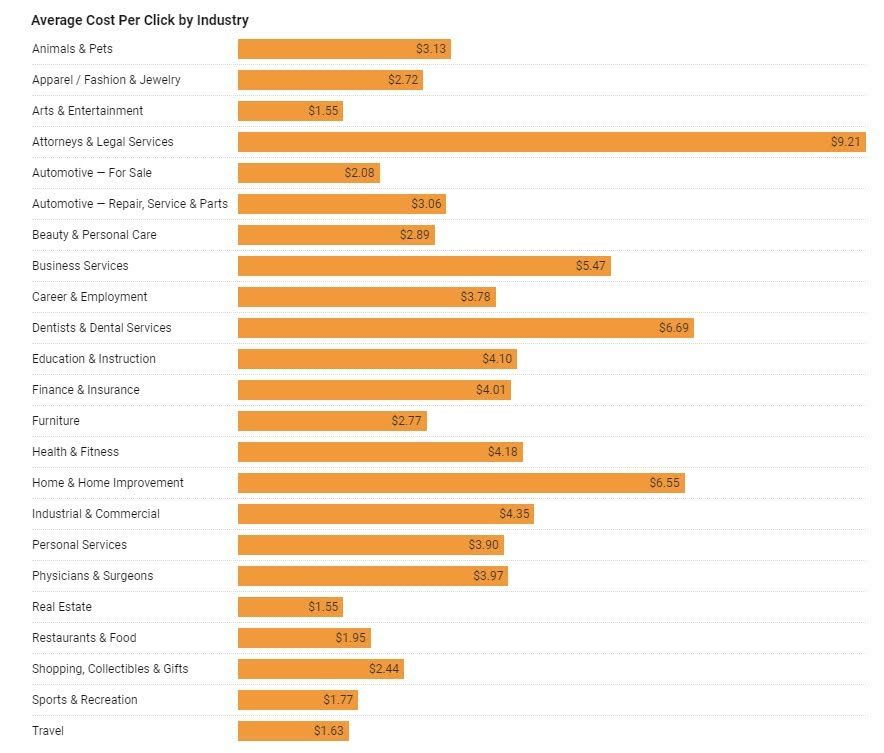
Although this is a technical process, Lakeside Bakery decided to run the campaign themselves rather than rely on PPC agencies.
They decided to focus on St. Cloud locals looking for a nearby bakery, and they set a bid amount of $2, which is slightly higher than the restaurants and food average of $1.95.
8️⃣ Monitor and optimize
Once your PPC campaign is up and running, you will slowly start to see the results come in. You can now measure this against the goals you set at the start of your campaign journey.
It’s important to adjust your campaign if you find that you’re not seeing the results you were hoping for.
One way to fine-tune your PPC campaigns is by A/B testing different designs, landing pages, and keywords.
After having run their campaign for three months, Lakeside Bakery managed to achieve a 4.5% click-through rate (CTR) on their PPC campaign.
Despite falling slightly below their target, Lakeside Bakery deemed their campaign highly successful because they noticed a substantial uptick in foot traffic at their store and a notable increase in online orders.
Advanced PPC for Small Businesses
Once you've mastered the basics, you can start layering on top some advanced PPC strategies to dominate more of your market.
Video Ads
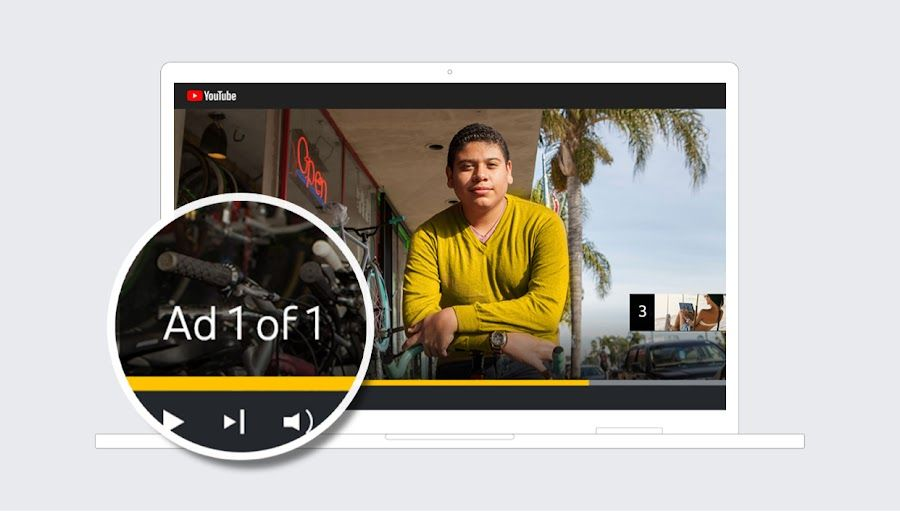
We think YouTube ads are the most underused and cost effective channels out there.
The reason is very simple - most of your competitors don't have the time or resources to create them, so that market is way less competitive and advertising costs are lower.
Video ads generate the most engagement of any format and have a CTR of around 1.84%.
They can be more engaging and informative than traditional ads. This helps improve brand recall and conversion rates.
- Here is a useful guide to set up PPC video ads for Facebook.
- Here’s a guide to set up PPC video ads for YouTube.
Remarketing
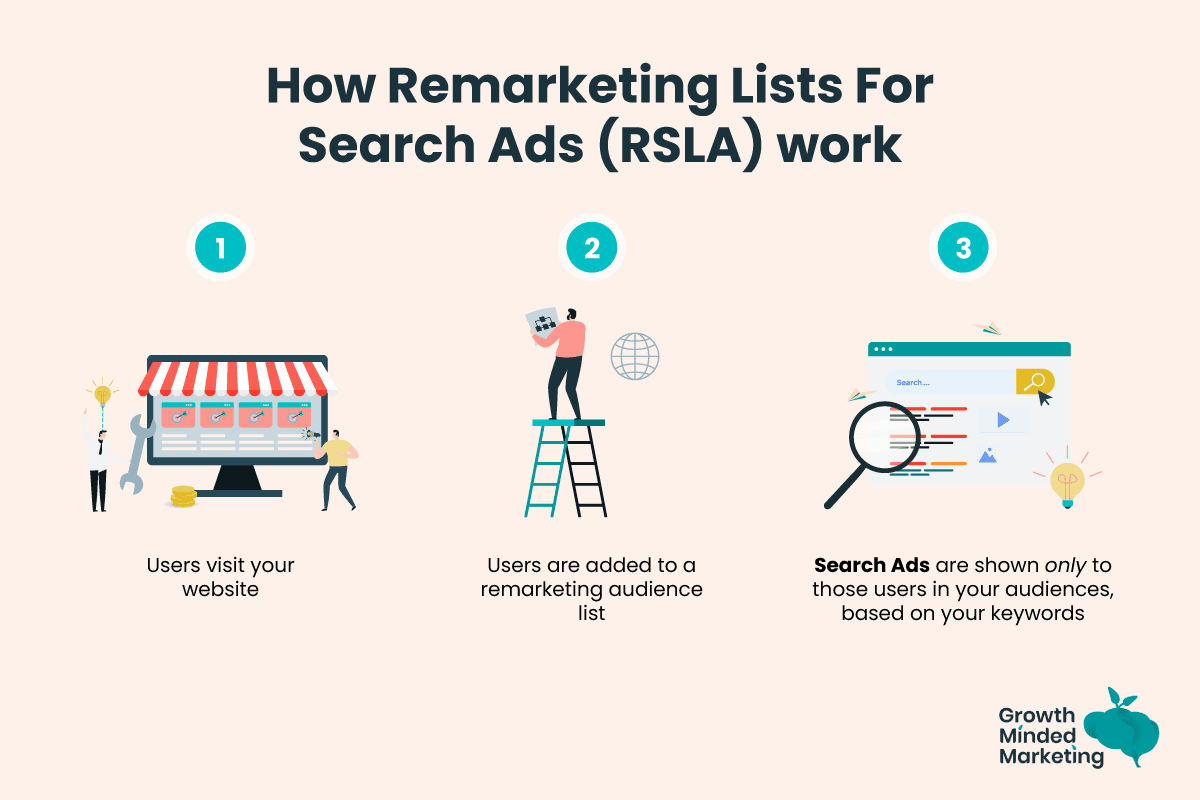
We love remarketing for PPC, because it converts so well.
This is another tool that is available through Google Ads.
It lets you to see which users visited your website and what they did while they were there.
You can then target those specific customers who are already qualified and already visited your website before.
The beautiful thing is most of your competitors won't be doing remarketing, so your small business will become a household name in your local area.
Should You Outsource PPC Management?
Running PPC for small businesses is hard work. To succeed, you need to wear the hats of a designer, writer, developer, and campaign manager.
There are many good reasons you should outsource PPC management to a reputable marketing agency. The primary reason is being able to rely on an expert team and getting better results from the same budget.
